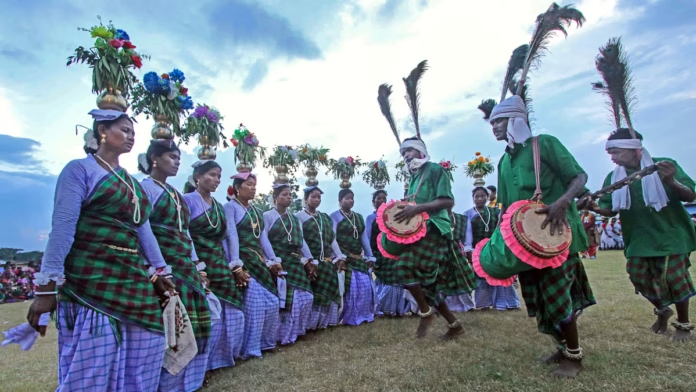India is a land of diverse cultures, traditions, and ethnic groups. Among its rich cultural tapestry, tribal communities hold a unique and significant place. With over 700 tribes spread across various states, Indian tribal culture is an essential part of the nation’s heritage. These indigenous groups have preserved their ancient traditions, rituals, and art forms for centuries, offering a glimpse into a way of life that is deeply connected to nature and spirituality. This article delves into the richness of Indian tribal culture, highlighting their traditions, heritage, and contributions to society.
Understanding Tribal Communities in India
Tribal communities, also known as Adivasis, are the original inhabitants of India. They have distinct customs, dialects, and social structures that differ from mainstream Indian society. The major tribal populations are concentrated in states such as Madhya Pradesh, Chhattisgarh, Jharkhand, Odisha, Rajasthan, Gujarat, and the Northeastern states. Some of the well-known tribes include:
- Gonds (Madhya Pradesh, Chhattisgarh)
- Santhals (Jharkhand, West Bengal, Odisha)
- Bhils (Rajasthan, Gujarat, Madhya Pradesh)
- Nagas (Nagaland, Manipur, Arunachal Pradesh)
- Todas (Tamil Nadu)
- Baigas (Chhattisgarh, Madhya Pradesh)
- Warlis (Maharashtra, Gujarat)
Each tribe has its own unique identity, language, folklore, and traditions, making them an integral part of India’s cultural diversity.
Art and Craft
Indian tribal art is renowned for its vibrant colors, intricate patterns, and symbolic representations. Some of the most famous tribal art forms include:
- Warli Art (Maharashtra) – A monochromatic art style depicting daily life and nature.
- Madhubani Painting (Bihar) – Known for its geometric patterns and mythological themes.
- Gond Art (Madhya Pradesh) – Characterized by fine lines and intricate dot work.
- Pithora Painting (Gujarat, Madhya Pradesh) – A form of mural painting used for religious rituals.
- Dokra Metal Craft (Chhattisgarh, Odisha, West Bengal) – Ancient metal casting technique creating figurines and jewelry.
These traditional art forms continue to thrive and are being increasingly recognized in the global art market.
Festivals and Rituals
Tribal communities celebrate numerous festivals that reflect their spiritual beliefs, connection with nature, and social unity. Some prominent tribal festivals include:
- Hornbill Festival (Nagaland) – Showcases Naga culture, dance, and music.
- Karma Festival (Jharkhand, Odisha, Chhattisgarh) – Celebrated for prosperity and nature worship.
- Sarhul (Jharkhand, Bihar, Odisha) – A spring festival honoring trees and nature spirits.
- Bhagoria Festival (Madhya Pradesh, Maharashtra) – A unique festival of the Bhil tribe involving matchmaking rituals.
These festivals strengthen community bonds and provide a platform to showcase their distinct heritage.
Music and Dance
Music and dance form the essence of tribal traditions. Each tribe has its own distinctive musical instruments and dance forms, which are performed during festivals, marriages, and religious ceremonies.
- Ghoomar Dance (Rajasthan, Gujarat) – A traditional dance of the Bhil tribe.
- Bihu Dance (Assam) – A folk dance celebrating the Assamese New Year.
- Dhemsa Dance (Odisha, Andhra Pradesh) – Performed by tribal communities during celebrations.
- Karma Dance (Jharkhand, Chhattisgarh) – Associated with the worship of the Karma tree.
The rhythmic beats, expressive movements, and vibrant costumes make these dance forms a visual delight.
Cuisine and Lifestyle
Tribal cuisine is deeply rooted in organic farming, forest produce, and traditional cooking techniques. Their diet primarily consists of millets, wild berries, bamboo shoots, fish, and locally available vegetables.
- Mahua (Madhya Pradesh, Chhattisgarh) – A traditional drink made from Mahua flowers.
- Bamboo Shoot Curry (Northeast India) – A delicacy prepared from fresh bamboo shoots.
- Chikhvi (Tripura) – A traditional pork and bamboo shoot dish.
- Ragi Mudde (Karnataka, Tamil Nadu) – A staple dish made from finger millet.
Their sustainable and organic lifestyle offers valuable lessons in eco-friendly living and conservation.
Challenges Faced by the Communities
Despite their rich cultural heritage, tribal communities face several challenges, including:
- Loss of Traditional Lands – Due to industrialization and urban expansion, many tribes are losing their ancestral lands.
- Economic Marginalization – Limited access to education and employment opportunities affects their socio-economic development.
- Cultural Erosion – The influence of modernization and mainstream culture is gradually diluting traditional practices.
- Lack of Healthcare and Education – Many tribal areas still lack basic healthcare facilities and educational infrastructure.
Government initiatives like Tribal Sub-Plan, Vanbandhu Kalyan Yojana, and Eklavya Model Residential Schools aim to uplift these communities while preserving their heritage.
The tribal culture and heritage of India are invaluable treasures that enrich the country’s diversity. Their traditions, art, festivals, music, and sustainable way of life offer profound insights into an ancient and harmonious coexistence with nature.
Efforts to preserve and promote tribal heritage are essential in ensuring that these indigenous cultures thrive for generations to come. By embracing and respecting their contributions, we can celebrate India’s true cultural essence and uphold the legacy of its first inhabitants.












